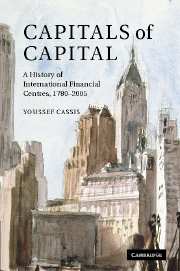Book contents
- Frontmatter
- Contents
- List of tables
- Foreword
- Preface
- Introduction
- 1 The age of private bankers, 1780–1840
- 2 The concentration of capital, 1840–1875
- 3 A globalised world, 1875–1914
- 4 Wars and depression, 1914–1945
- 5 Growth and regulation, 1945–1980
- 6 Globalisation, innovation and crisis, 1980–2009
- Conclusion
- Glossary
- Notes
- Bibliography
- Index
1 - The age of private bankers, 1780–1840
Published online by Cambridge University Press: 05 June 2012
- Frontmatter
- Contents
- List of tables
- Foreword
- Preface
- Introduction
- 1 The age of private bankers, 1780–1840
- 2 The concentration of capital, 1840–1875
- 3 A globalised world, 1875–1914
- 4 Wars and depression, 1914–1945
- 5 Growth and regulation, 1945–1980
- 6 Globalisation, innovation and crisis, 1980–2009
- Conclusion
- Glossary
- Notes
- Bibliography
- Index
Summary
For Walter Boyd, an ambitious young Scottish businessman determined in the early 1780s to cut a figure on a larger stage, London, Paris and Amsterdam were at that time the three great international financial centres upon which Europe's trade depended. Where to seek one's fortune? Boyd opted for Paris. He settled there in 1785 and in the space of a few years became one of the capital's most influential bankers, but had to flee to London in 1792. After brilliant initial successes in issuing loans for the British government, he went through some difficult years, eventually recovering his fortune only after Waterloo.
Walter Boyd's route illustrates fairly well the changes that occurred within the leading international financial centres during the French wars, as well as the new international hierarchy which formed at the beginning of the nineteenth century: the pre-eminence of London; the resurgence of Paris, which emerged as the second major market; and the eclipse of Amsterdam, relegated to the rank of a lesser centre, along with cities like Brussels, Frankfurt, Hamburg and Geneva, in a hierarchical order that was not easy to determine. This hierarchy was obviously not of a permanent nature. It nevertheless left its mark on the whole of the nineteenth century, despite the coming of Berlin, which to some extent replaced Frankfurt after 1870, and then the emergence of New York at the turn of the twentieth century.
- Type
- Chapter
- Information
- Capitals of CapitalA History of International Financial Centres 1780–2005, pp. 7 - 40Publisher: Cambridge University PressPrint publication year: 2006



